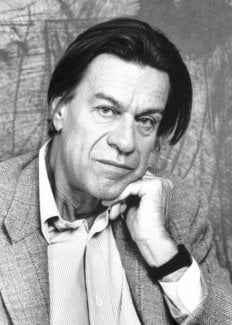Pierre-Gilles de Gennes
Biographical

P. G. de Gennes was born in Paris, France, in 1932. He majored from the École Normale in 1955. From 1955 to 1959, he was a research engineer at the Atomic Energy Center (Saclay), working mainly on neutron scattering and magnetism, with advice from A. Herpin, A. Abragam and J. Friedel (PhD 1957). During 1959 he was a postdoctoral visitor with C. Kittel at Berkeley, and then served for 27 months in the French Navy. In 1961, he became assistant professor in Orsay and soon started the Orsay group on supraconductors. Later, 1968, he switched to liquid crystals. In 1971, he became Professor at the Collège de France, and was a participant of STRASACOL (a joint action of Strasbourg, Saclay and College de France) on polymer physics.
From 1980, he became interested in interfacial problems, in particular the dynamics of wetting. Recently, he has been concerned with the physical chemistry of adhesion.
P.G. de Gennes has received the Holweck Prize from the joint French and British Physical Society; the Ampere Prize, French Academy of Science; the gold medal from the French CNRS; the Matteuci Medal, Italian Academy; the Harvey Prize, Israel; the Wolf Prize, Israel; The Lorentz Medal, Dutch Academy of Arts and Sciences; and polymer awards from both APS and ACS.
He is a member of the French Academy of Sciences, the Dutch Academy of Arts and Sciences, the Royal Society, the American Academy of Arts and Sciences, and the National Academy of Sciences, USA.
This autobiography/biography was written at the time of the award and later published in the book series Les Prix Nobel/ Nobel Lectures/The Nobel Prizes. The information is sometimes updated with an addendum submitted by the Laureate.
Addendum, September 2005
From 1976 to 2002, P.-G. de Gennes was the director of the Ecole de Physique et Chimie (Paris). This is a center for the formation of research engineers in Physics, Chemistry (and, from de Gennes’ time, Biology). This place has been the base of Pierre and Marie Curie, Georges Claude, Paul Langevin, and recently of G. Charpak (after his retirement from CERN). It is a producer of small “start up” companies.
After receiving the Physics Prize in 1991, de Gennes decided to give talks on science, on innovation, and on common sense, to high school students. He visited around 200 high schools during 1992-1994. This story is summarized in a book (Les objets fragiles, Plon, Paris 1994).
Currently de Gennes is working at the Institut Curie (Paris), an interdisciplinary center and hospital on cancer research. He works on cellular adhesion and, more recently, on brain function.
Other recent books: Gouttes, bulles, perles et ondes (Belin, Paris 2003) with F. Brochard and D. Quéré. Petit point, a satirical book (Le Pommier, Paris 2003).
Pierre-Gilles de Gennes died on 18 May, 2007.
Copyright © The Nobel Foundation 2005Nobel Prizes and laureates
Six prizes were awarded for achievements that have conferred the greatest benefit to humankind. The 14 laureates' work and discoveries range from quantum tunnelling to promoting democratic rights.
See them all presented here.
